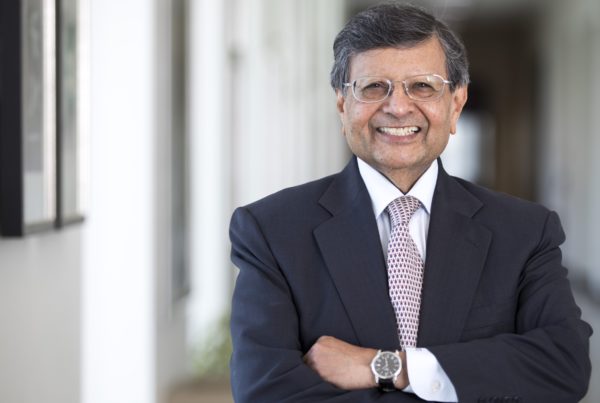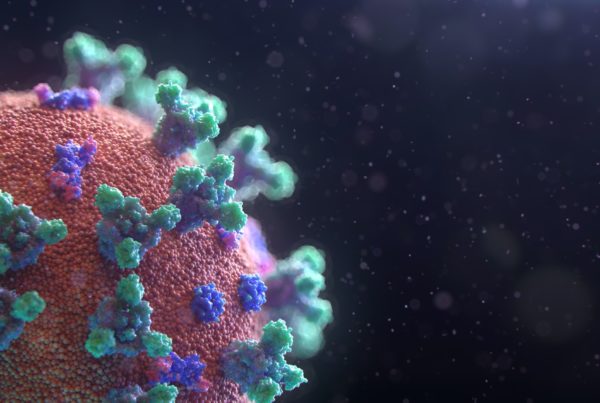Published: Oct 06, 2005 in Knowledge@Emory
The aftermath of most disasters follows a fairly predictable cycle in the media: first, darker and darker estimates of the damages, then reassessments down the line in which analysts decide that the effects won’t be so dire after all. But the aftermath of Hurricane Katrina won’t be like that, say scholars at Emory University and its Goizueta Business School: the news is likely to stay bad for some time.
The economic after-effects of Hurricane Katrina are likely to outweigh those of 9/11, predicts Emory economist Robert Chirinko. While both tragedies disrupted vital sectors of the economy, “the list is longer for the Katrina tragedy: petroleum refining, petroleum and gas distribution and shipping.”
“In the case of 9/11, the damage could be repaired quickly because of the ‘soft’ nature of the businesses. By contrast, the business assets affected by Katrina are ‘hard,'” says Chirinko, which makes them more difficult to repair and replace. “It may take months to repair the refineries and dredge the channels that have been damaged during Katrina. These are vital sectors whose production is not easily replaced in the near term, so the effects will be substantial.”
Richard Metters, a professor of decision and information analysis at Goizueta who specializes in supply chain management, says Katrina highlights the vulnerability of just-in-time (JIT) inventory systems. For a company dependent on a supplier shut down by Katrina, the impact is potentially devastating.
Because just-in-time systems encourage long-term reliance on a single source for parts and the holding of very little inventory, any disruption in the supply chain can be catastrophic. Several years ago, for example, Toyota lost $100 million for lack of a $5 part, made suddenly unavailable because of a fire in the partmaker’s factory. “If you truly did adhere to JIT and you only had four hours of inventory, you’re shut down.”
The biggest longer-term impact of Katrina for the country as a whole is likely to be felt in the energy market, some professors say, because the storm shut down much of the Gulf’s oil and gas production and refining capacity. Jeffrey Rosensweig, an international business and finance professor at Goizueta, suspects the U.S. allies that have helped out recently in providing additional gasoline supplies are likely to begin lecturing the U.S. about its energy policies – the need to keep gasoline in a strategic reserve, not just oil; and the need to develop new refinery capacity.
In Rosensweig’s view, because most Europeans pay $4 to $5 a gallon for gas as a matter of routine, they aren’t likely to be very happy about subsidizing U.S. consumption for long. “Short term, they’re being very helpful, but it gives them the justified opportunity to lecture us a little bit,” he says. “Considering we’ve been lecturing them so much, it’s fair play.”
If energy prices continue to rise, that may hurt manufacturing as well, according to Metters. Companies that use highly efficient lean-supply systems are typically locked into truck delivery and can’t simply shift to more energy-efficient modes of transportation.
Rosensweig hopes Katrina’s aftermath will serve as a catalyst to build new oil refineries and additional ports for liquefied natural gas. “Not in My Backyard” opposition has stalled the creation of both kinds of facilities for decades, according to Rosensweig, but it’s become clearer now that the U.S. needs more capacity.
In addition, he says he hopes President George W. Bush will begin to think about the need to conserve energy. “I’m still shocked at how little our president talks about conservation. He always seems to be focused on the supply side of the equation—drilling in places, relaxing environmental standards in order to increase supply—but he never seems interested in trying to conserve demand,” observes Rosensweig.
Beyond the fault lines Katrina exposed in the nation’s economic structure, the response to the storm highlighted a number of serious shortcomings in the government and in American society.
Jagdish Sheth, a professor of marketing and corporate strategist at Goizueta, says that the world has been shocked by U.S. response to the disaster. Sheth says that many are asking, “How can a super-economic power be so unprepared, despite all the warnings?”
The picture of New Orleans’ harsh divisions between rich and poor also has surprised many people overseas, Sheth says, and is being used by some as evidence that capitalism may be a flawed economic system. “People didn’t expect [to see] such raw poverty in this country—that there would be looting, and also the fact that there would be physical violence against the police,” he adds. Many international viewers have also noted the contrast between the peaceful response of countries hit by the tsunami disaster and the looting, vandalism, and physical violence that followed Katrina.
While the government’s failures to protect New Orleans residents have been well publicized, Sheth believes the lack of leadership from major companies also may be contributing to the impression that capitalism contributed to the depth of misery seen in New Orleans.
Sheth says he has been surprised by the lack of visible business leadership. Unlike 9/11, he says, when many companies came forward, or even last December’s tsunami, this time around few large companies have come forward to offer help. “I saw a conspicuous absence of business leaders talking to the media, committing their resources, and that has been a surprise to me,” he says.
Overcoming all those negative impressions America is sending the world won’t just be a matter of changing the pictures on the screen, Sheth warns. Instead, he says, the way you counter a negative image is to acknowledge the problem – and then work to fix it.
(For its part, the Emory University community is trying to help. President Jim Wagner has announced that the university has opened its doors for the fall semester to hundreds of undergraduate and professional students displaced by Katrina, to enable them to continue their studies without disruption.)
To begin addressing the problem, Sheth suggests reorganizing the Federal Emergency Management Agency so that it is no longer under the jurisdiction of the Department of Homeland Security. New Orleans also must be rebuilt according to “a proactive plan that has a vision” of what the city might become. He suggests that city leaders look at such long-sluggish cities as St. Petersburg and Berlin for ideas about how to go about revitalizing a very depressed metropolis. And he sees several possibilities ahead for New Orleans:
- A research hub. With the proximity of Tulane University, the University of New Orleans, and many chemical and oil plants, New Orleans could become the main research center for the petrochemical industry. This could be started very quickly, he says, because it just requires the dedication of an area as a special economic zone in which industrial labs are encouraged to locate.
- A trading center. New Orleans is one of the country’s most important ports, yet it hasn’t been able to capitalize on that strategic advantage, notes Sheth. Here, the government could step in, he says, and encourage the development by locating the administration for the North American Free Trade Agreement or the Central American Free Trade Agreement in the city.
- An entertainment and gaming destination. New Orleans could become a destination for gambling the way nearby Biloxi, Miss. has, Sheth says. An amusement park also could be built very quickly, helping to attract people.
In any case, Sheth believes that things are unlikely to become easy in the Big Easy any time soon. Sheth says the recovery is going to take much longer than people now think. “The damage is more permanent than people realize,” he says.





